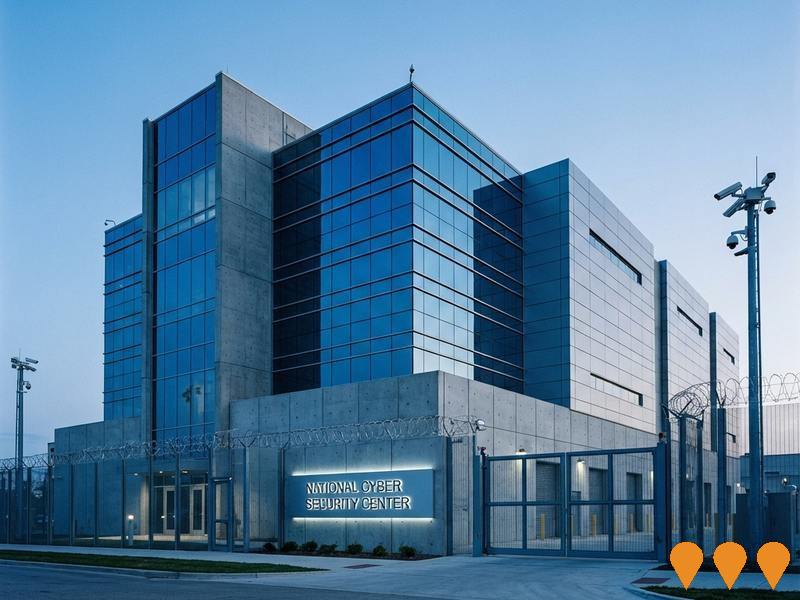Chart Color Schemes
est. as @ -- *
ABS ERP | -- people | --
2021 Census | -- people
Sales Activity
Curious about local property values? Filter the chart to assess the volume and appreciation (including resales) trends and regional comparisons, or scroll to the map below view this information at an individual property level.
Find a Recent Sale
Sales Detail
Population
Roxby Downs has shown very soft population growth performance across periods assessed by AreaSearch
Roxby Downs' population is approximately 4,091 as of August 2025. This represents an increase of 115 people since the 2021 Census, which recorded a population of 3,976. The growth is inferred from ABS estimates: 4,089 in June 2024 and one additional validated address since the Census date. The population density stands at 14.2 persons per square kilometer. Roxby Downs' 2.9% growth since the census compares favorably with its SA3 area's 4.1%. Natural growth contributed about 60.7% of recent population gains.
AreaSearch uses ABS/Geoscience Australia projections for each SA2 area, released in 2024 with a base year of 2022. For areas not covered and years post-2032, the SA State Government's Regional/LGA projections by age category are adopted, based on 2021 data and adjusted using weighted aggregation from LGA to SA2 levels. Future projections indicate an overall population decline of 252 persons by 2041. However, specific age cohorts like the 45-54 group are expected to grow by 37 people during this period.
Frequently Asked Questions - Population
Development
The level of residential development activity in Roxby Downs is very low in comparison to the average area assessed nationally by AreaSearch
Roxby Downs has seen minimal construction activity with fewer than one new dwelling approved annually on average over the five years from 2015 to 2019, with a total of three approvals during this period. This low level of development reflects the rural nature of the area, where housing development is typically driven by specific local needs rather than broader market demand. It should be noted that with such low approval numbers, yearly growth figures and relativities can vary significantly based on individual projects.
Roxby Downs has substantially lower development levels compared to the Rest of SA and also below national averages. Given stable or declining population forecasts for the area, housing pressure may remain relatively low, potentially creating favourable conditions for buyers in the future.
Given stable or declining population forecasts, Roxby Downs may experience less housing pressure, creating favourable conditions for buyers.
Frequently Asked Questions - Development
Infrastructure
Roxby Downs has emerging levels of nearby infrastructure activity, ranking in the 22ndth percentile nationally
Area infrastructure changes significantly influence local performance. Three projects identified by AreaSearch may impact this area: Roxby Downs Area School Refurbishment, Olympic Dam Underground Growth Projects, Olympic Dam Smelter Refinery Expansion Project, and Woomera Redevelopment Program. Most relevant are listed below.
Professional plan users can use the search below to filter and access additional projects.
INFRASTRUCTURE SEARCH
 Denotes AI-based impression for illustrative purposes only, not to be taken as definitive under any circumstances. Please follow links and conduct other investigations from the project's source for actual imagery. Developers and project owners wishing us to use original imagery please Contact Us and we will do so.
Denotes AI-based impression for illustrative purposes only, not to be taken as definitive under any circumstances. Please follow links and conduct other investigations from the project's source for actual imagery. Developers and project owners wishing us to use original imagery please Contact Us and we will do so.
Frequently Asked Questions - Infrastructure
Olympic Dam Smelter Refinery Expansion Project
Proposed expansion of the existing smelter and refinery at Olympic Dam to increase copper cathode production capacity from the current ~200,000 tpa to a potential 650,000 tpa of copper plus associated products (gold, silver, uranium, and acid). This includes a phased strategy involving two-stage smelting with a new primary Flash Smelting Furnace, conversion of the existing Direct Blast Furnace, a new electro-refinery, and supporting infrastructure like water supply linkages (Northern Water Project) and electricity transmission upgrades. A final investment decision is expected in the first half of FY27 (mid-2026 to end-2026). The project is an 'impact assessed development' under assessment by the SA Government and is separate from a concurrent A$840M investment in underground mining and processing improvements.
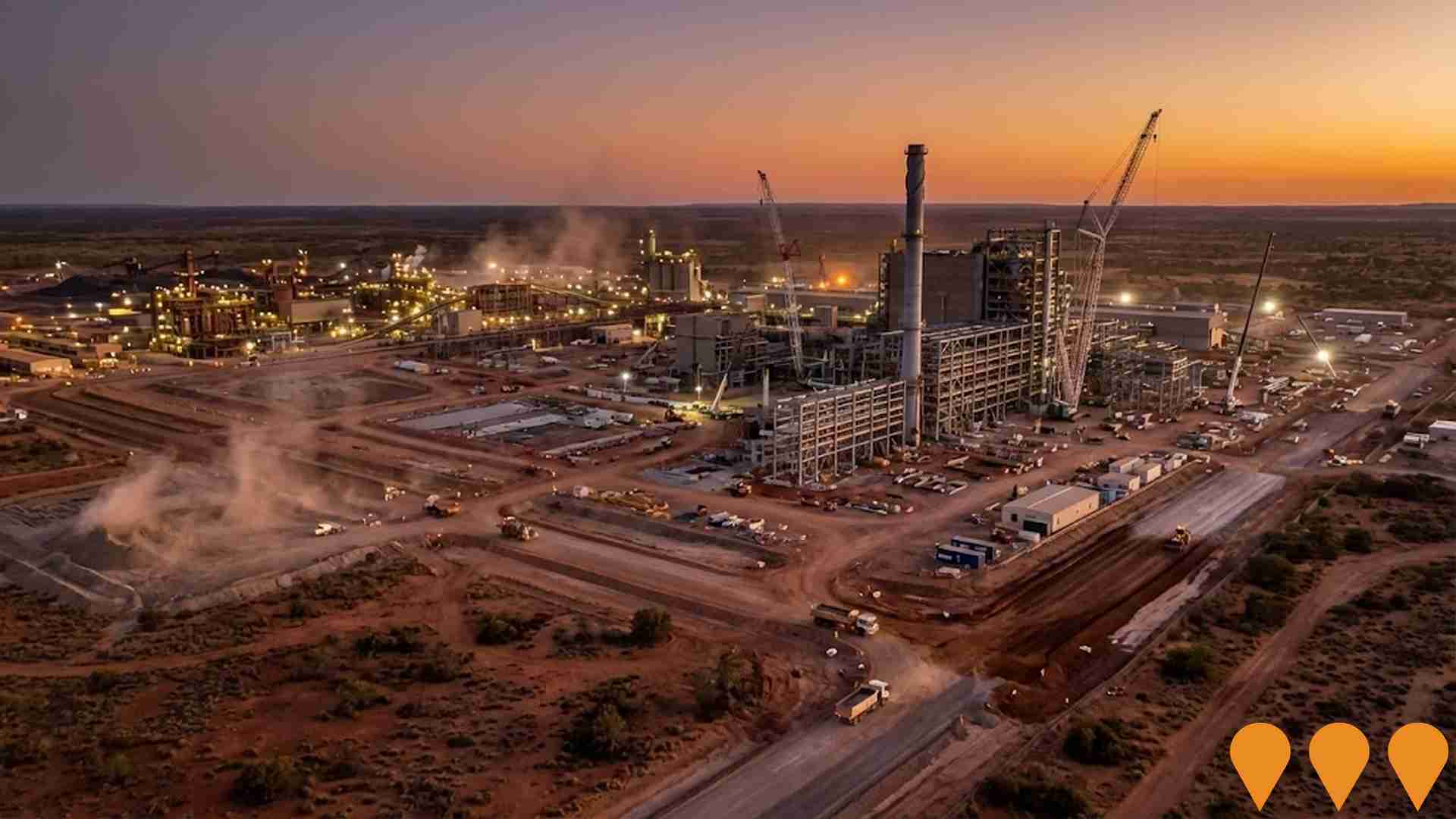
Northern Water
Northern Water is an extensive water infrastructure and supply project aimed at securing an alternate, sustainable, climate-independent water source for eastern Eyre Peninsula, Upper Spencer Gulf, and the Far North of South Australia. The project supports current and future growth in the region and reduces reliance on River Murray, Great Artesian Basin, and local groundwater resources, servicing users such as mining operations, industry (including hydrogen), Department of Defence, remote communities, pastoralists, and SA Water. Key features include a 130-260 ML/day seawater reverse osmosis desalination plant, water intake and outlet pipes, a ~600km main trunk pipeline, lateral connections, six pump stations, six water storage areas, electricity transmission infrastructure, communications towers, and ancillary services.

Enabling Infrastructure for Hydrogen Production
Australia has completed the National Hydrogen Infrastructure Assessment (NHIA) to 2050 and refreshed its National Hydrogen Strategy (2024). The programmatic focus has shifted to planning and enabling infrastructure through measures such as ARENA's Hydrogen Headstart and the Hydrogen Production Tax Incentive (from April 2025). Round 2 of Hydrogen Headstart consultation occurred in 2025. Collectively these actions aim to coordinate investment in transport, storage, water and electricity inputs linked to Renewable Energy Zones and priority hubs, supporting large-scale renewable hydrogen production and future export supply chains.
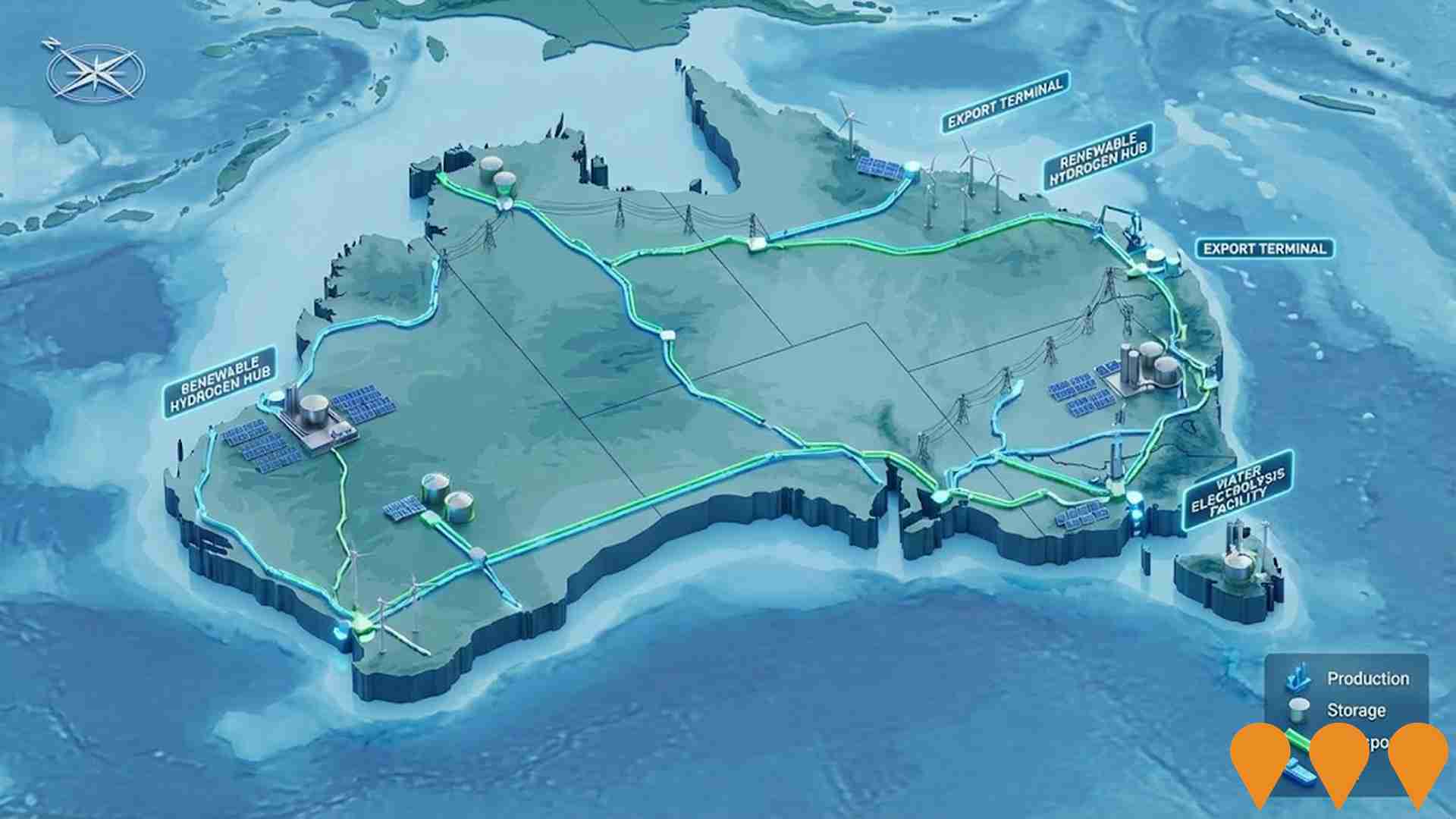
Enabling Digital Health Services for Regional and Remote Australia
National initiative to expand and improve digital health access for people in regional and remote Australia. Focus areas include enabling telehealth and virtual care, upgrading clinical systems and connectivity, supporting secure information exchange, and building workforce capability in digital health, aligned with the Australian Government's Digital Health Blueprint and Action Plan 2023-2033.
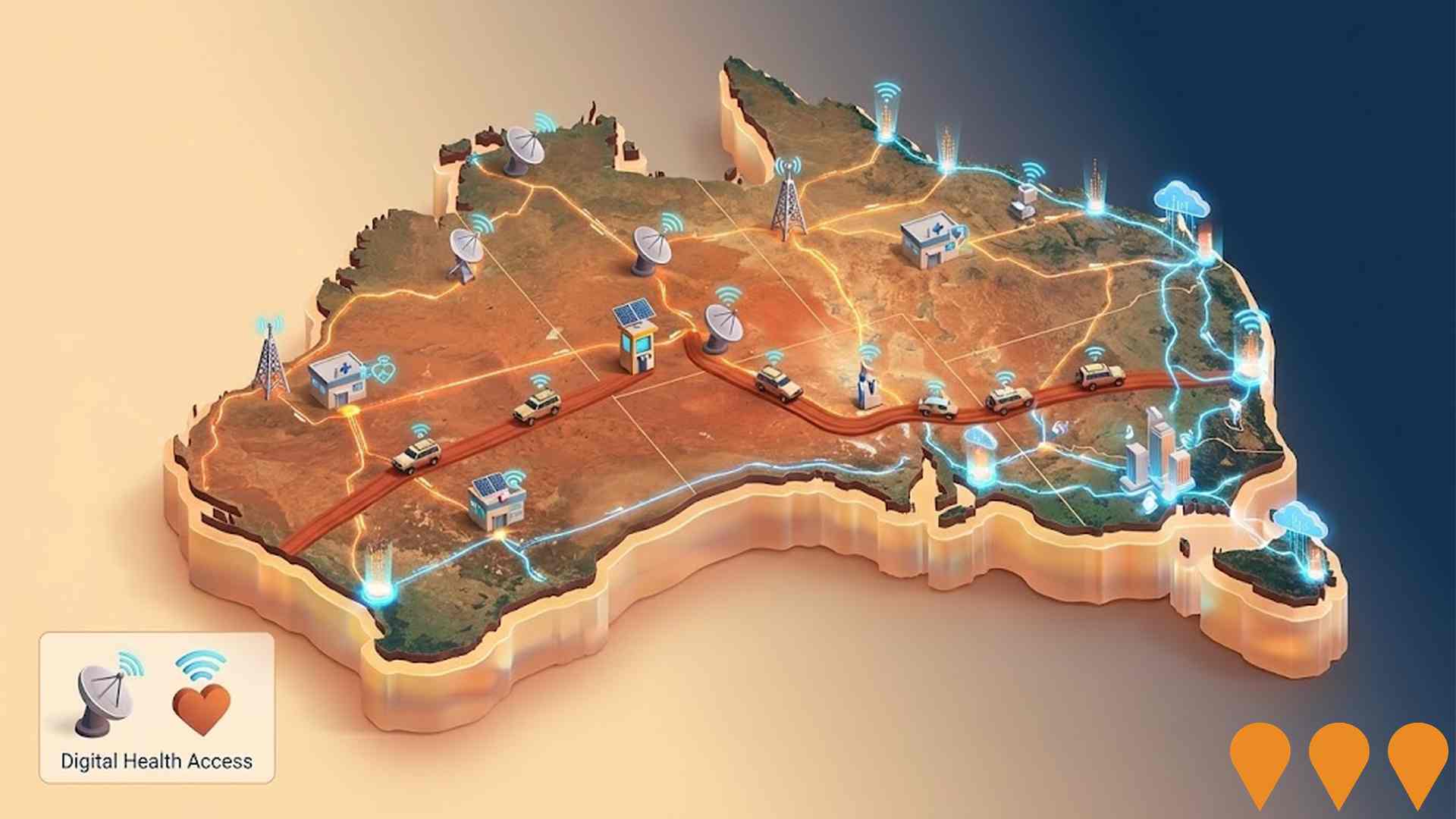
Olympic Dam Underground Growth Projects
A series of growth-enabling underground mining and processing projects with an A$840 million investment. Key elements include: a new underground access tunnel (decline) into the Southern Mine Area; a new backfill system using underground pipes for mine stabilisation; expansion of ore pass capacity with new locomotives and an extended electric rail network; and installation of a new oxygen plant to support smelter debottlenecking, aiming to increase copper concentrate smelting rates from 80 to 85 tonnes per hour. The projects are designed to strengthen underground mining productivity and lay foundations for future growth, creating around 200 construction jobs.
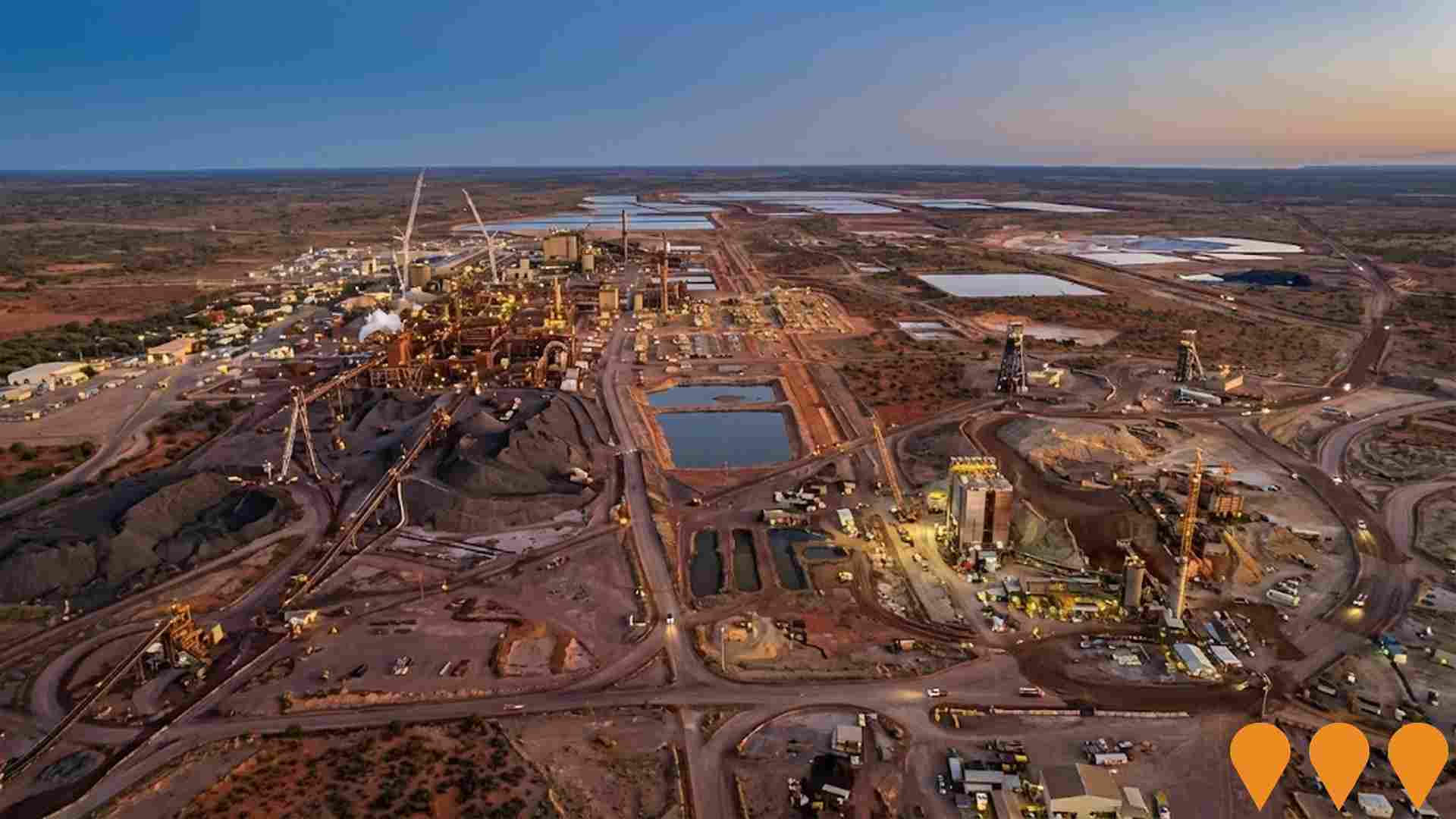
Bulk Water Supply Security
Nationwide program led by the National Water Grid Authority to improve bulk water security and reliability for non-potable and productive uses. Activities include strategic planning, science and business cases, and funding of state and territory projects such as storages, pipelines, dam upgrades, recycled water and efficiency upgrades to build drought resilience and support regional communities, industry and the environment.

National EV Charging Network (Highway Fast Charging)
Partnership between the Australian Government and NRMA to deliver a backbone EV fast charging network on national highways. Program funds and co-funds 117 DC fast charging sites at roughly 150 km intervals to connect all capital cities and regional routes, reducing range anxiety and supporting EV uptake.

Network Optimisation Program - Roads
A national program concept focused on improving congestion and reliability on urban road networks by using low-cost operational measures and technology (e.g., signal timing, intersection treatments, incident management) to optimise existing capacity across major city corridors.

Employment
The exceptional employment performance in Roxby Downs places it among Australia's strongest labour markets
Roxby Downs has a skilled workforce with strong representation in manufacturing and industrial sectors. Its unemployment rate was 0.8% as of June 2025, with an estimated employment growth of 5.0% over the past year.
As of this date, there were 2,759 residents employed, with an unemployment rate of 3.8%, which is below Rest of SA's rate of 4.6%. Workforce participation in Roxby Downs was at 78.0%, higher than Rest of SA's 54.1%. Key industries of employment among residents are mining, construction, and accommodation & food services. Mining shows a notable concentration with employment levels at 17.6 times the regional average, while agriculture, forestry & fishing has lower representation at 0.2% compared to the regional average of 14.5%.
There were 1.6 workers for every resident as per the Census, indicating that Roxby Downs functions as an employment hub with more jobs than residents and attracts workers from surrounding areas. Between June 2024 and June 2025, employment increased by 5.0% while labour force grew by 5.2%, causing the unemployment rate to rise by 0.2 percentage points. This contrasts with Rest of SA where employment contracted by 1.2%, labour force grew by 0.1%, and unemployment rose by 1.2 percentage points. Jobs and Skills Australia's national employment forecasts from May 2025 suggest that Roxby Downs' local growth could be approximately 4.1% over five years and 10.3% over ten years, based on industry-specific projections applied to the local employment mix.
Frequently Asked Questions - Employment
Income
The economic profile demonstrates exceptional strength, placing the area among the top 10% nationally based on comprehensive AreaSearch income analysis
Roxby Downs' median income among taxpayers was $100,806 in financial year 2022. The average income stood at $108,719 during the same period. This compares to figures for Rest of SA's of $46,889 and $56,582 respectively. Based on Wage Price Index growth of 12.83% since financial year 2022, current estimates would be approximately $113,739 (median) and $122,668 (average) as of September 2025. According to Census 2021 income data, household, family and personal incomes in Roxby Downs rank highly nationally, between the 98th and 99th percentiles. The data shows that 35.1% of individuals earn between $1,500 - 2,999 per week (1,435 individuals). This is consistent with broader trends across the surrounding region where 27.5% fall into the same earnings category. A substantial proportion of residents (54.3%) earn above $3,000/week, indicating strong economic capacity throughout the locality. After housing costs, residents retain 91.6% of their income, reflecting strong purchasing power. The area's SEIFA income ranking places it in the 5th decile.
Frequently Asked Questions - Income
Housing
Roxby Downs is characterized by a predominantly suburban housing profile, with a higher proportion of rental properties than the broader region
The latest Census data shows that 96.7% of dwellings in Roxby Downs were houses, with the remaining 3.4% being semi-detached, apartments, or other types. This compares to Non-Metro SA's figures of 85.7% houses and 14.3% other dwellings. Home ownership in Roxby Downs stood at 6.8%, with mortgaged dwellings at 23.0% and rented ones at 70.2%. The median monthly mortgage repayment was $1,517, higher than Non-Metro SA's average of $1,138. The median weekly rent in Roxby Downs was $260, compared to Non-Metro SA's $187 and the national average of $375 for rents. Nationally, mortgage repayments were lower at $1,863.
Frequently Asked Questions - Housing
Household Composition
Roxby Downs features high concentrations of group households, with a higher-than-average median household size
Family households constitute 70.9% of all households, including 39.9% couples with children, 22.5% couples without children, and 7.4% single parent families. Non-family households account for the remaining 29.1%, with lone person households at 24.3% and group households comprising 4.8%. The median household size is 2.7 people, larger than the Rest of SA average of 2.4.
Frequently Asked Questions - Households
Local Schools & Education
Roxby Downs faces educational challenges, with performance metrics placing it in the bottom quartile of areas assessed nationally
The area's university qualification rate is 17.2%, significantly lower than the Australian average of 30.4%. This disparity presents both a challenge and an opportunity for targeted educational initiatives. Bachelor degrees are the most common at 12.3%, followed by postgraduate qualifications (3.3%) and graduate diplomas (1.6%). Vocational credentials are prominent, with 48.0% of residents aged 15+ holding such qualifications - advanced diplomas (7.8%) and certificates (40.2%).
Educational participation is high, with 34.7% of residents currently enrolled in formal education. This includes 17.6% in primary education, 7.9% in secondary education, and 2.7% pursuing tertiary education. The area has two schools: Roxby Downs Area School and St Barbara's Parish School, serving a total of 697 students. Both schools offer integrated K-12 education, providing academic continuity throughout students' journey.
Frequently Asked Questions - Education
Schools Detail
Nearby Services & Amenities
Transport
No public transport data available for this catchment area.
Frequently Asked Questions - Transport
Transport Stops Detail
Health
Roxby Downs's residents boast exceedingly positive health performance metrics with very low prevalence of common health conditions across all age groups
Roxby Downs shows excellent health outcomes across all age groups, with low prevalence of common health conditions. Private health cover is high at around 75% (3,080 people), compared to 53.1% in Rest of SA and a national average of 55.3%. Asthma and mental health issues are the most prevalent conditions, affecting 6.9% and 5.8% respectively.
A total of 81.6% report no medical ailments, higher than the 68.2% in Rest of SA. Only 2.3% (92 people) are aged 65 and over, lower than the 16.3% in Rest of SA. Seniors' health outcomes align with the general population's profile.
Frequently Asked Questions - Health
Cultural Diversity
Roxby Downs ranks below the Australian average when compared to other local markets across a number of language and cultural background related metrics
Roxby Downs' cultural diversity was found to be below average. As of the census, 80.3% of its population were citizens, 84.5% were born in Australia, and 90.0% spoke English only at home. Christianity was the predominant religion, comprising 35.1% of the population.
However, Buddhism was overrepresented at 1.5%, compared to 0.9% across the Rest of SA. Regarding ancestry, the top three groups were Australian (32.4%), English (28.8%), and Scottish (6.5%). Notably, Filipino (2.7%) Maori (1.1%), and Welsh (0.7%) ethnicities were overrepresented compared to regional averages of 0.9%, 0.3%, and 0.4% respectively.
Frequently Asked Questions - Diversity
Age
Roxby Downs hosts a very young demographic, ranking in the bottom 10% of areas nationwide
Roxby Downs has a median age of 31 years, which is significantly lower than the Rest of SA average of 47 years and considerably younger than the Australian median of 38 years. The 25-34 cohort is notably over-represented in Roxby Downs at 21.6%, compared to the Rest of SA average, while those aged 65-74 are under-represented at 1.9%. This concentration of the 25-34 age group is well above the national average of 14.5%. According to the 2021 Census, the 35-44 age group has grown from 18.7% to 20.8% of the population. Conversely, the 45-54 cohort has declined from 12.8% to 11.5%, and the 15-24 group has dropped from 11.0% to 9.9%. Demographic modeling suggests that Roxby Downs' age profile will evolve significantly by 2041. The 45-54 cohort is projected to grow strongly at 12%, adding 56 residents to reach a total of 525. Meanwhile, both the 65-74 and 0-4 age groups are expected to see reduced numbers.

